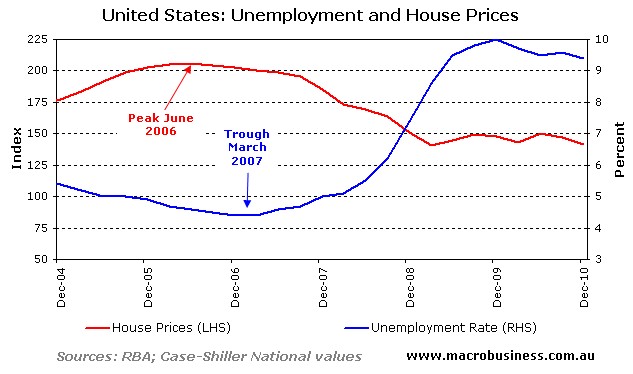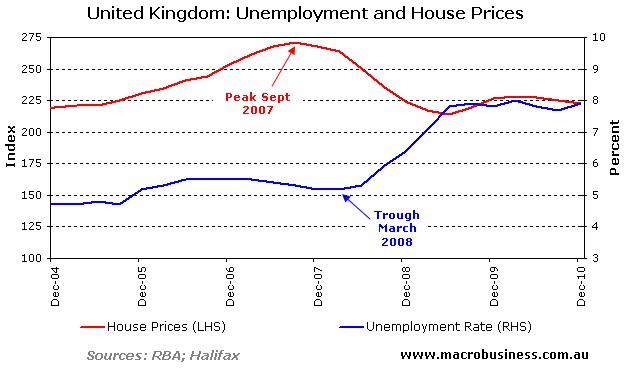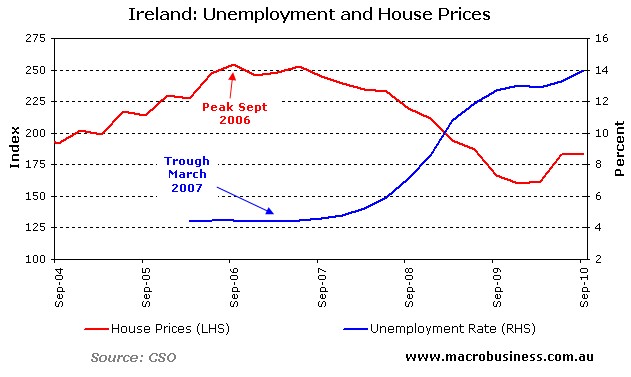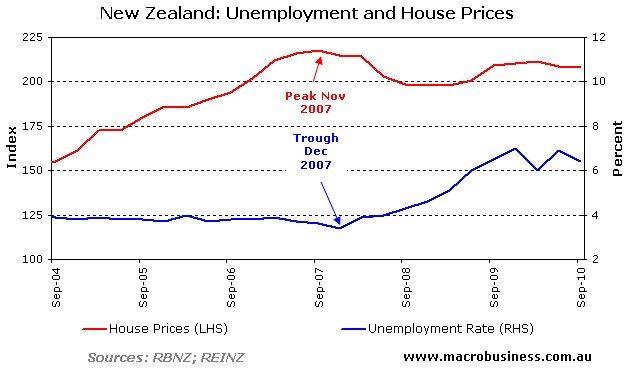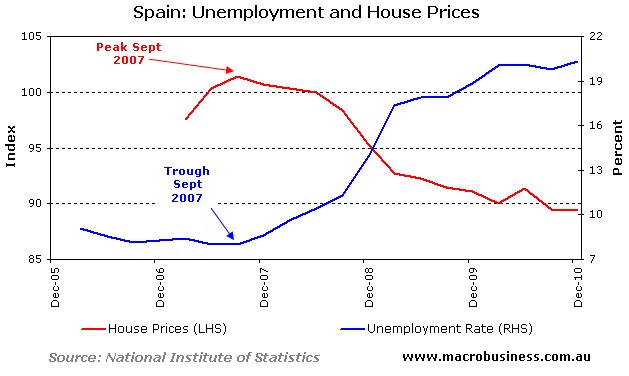Following on from Popping Bubble’s recent post, Australia’s low level of unemployment is often held-up as a reason why home values won’t fall. According to this argument, home values will remain supported as long as people have jobs and can continue meeting their mortgage repayment obligations.
For example, in last year’s infamous CBA investor presentation, the CBA used the below chart to argue that Australia’s “economic fundamentals”, including our low level of unemployment, “minimises the downside risk to Australia’s house prices”.

I have always been sceptical of this argument. As argued previously (most recently here), the rate of unemployment (and non-performing loans) often lags house prices. This is because when levels of debt and asset values are rising, households feel richer (the ‘wealth effect’), spurring consumer confidence, spending and employment growth. However, once asset prices stop rising (or fall in value), the process of debt feeding asset prices feeding confidence and consumer spending can shift into reverse, causing rising unemployment.
To test whether changes in employment levels in Australia are likely to lag/lead changes in housing values, I have charted changes in home prices against unemployment rates in five other nations that have recently experienced housing bubbles: the United States, the United Kingdom, Ireland, Spain and New Zealand. The results are outlined below.
United States:
Home prices in the USA peaked in June 2006 and then began falling gradually. However, unemployment continued falling, reaching a low of around 4.5% in March 2007 – 9 months after home prices peaked.
VERDICT: DECLINING HOME PRICES LED RISING UNEMPLOYMENT
United Kingdom:
Home prices in the UK peaked in September 2007 and then began falling gradually. However, unemployment continued falling, cratering in March 2008 at 5.2% – 6 months after home values peaked.
VERDICT: DECLINING HOME PRICES LED RISING UNEMPLOYMENT
Ireland:
Ireland’s home values peaked in September 2006, fell sharply over the next 3 months, and then recovered most of their value prior to continuing their descent over a 3-year period. By contrast, unemployment reached its low of 4.4% in March 2007 – 6 months after home prices peaked.
VERDICT: DECLINING HOME PRICES LED RISING UNEMPLOYMENT, BUT NOT CONCLUSIVELY
New Zealand:
NZ’s home prices peaked in November 2007 and then deflated gradually until a small rebound was experienced in mid-2009. Unemployment bottomed-out at 3.4% in December 2007 – 1 month after home prices peaked.
VERDICT: INCONCLUSIVE
Spain:
Spanish home prices peaked in September 2007, at the same time as unemployment cratered at 8%.
VERDICT: INCONCLUSIVE
Conclusion:
The claim that home prices will remain supported as long as unemployment remains low does not accord with the recent experience of the above nations. In three of the cases – the US, UK and Ireland – declines in home values began 6 to 9 months prior to unemployment rising. In the other two cases – NZ and Spain – the declines in home values more or less occurred simultaneously with the rises in unemployment.
Cheers Leith

